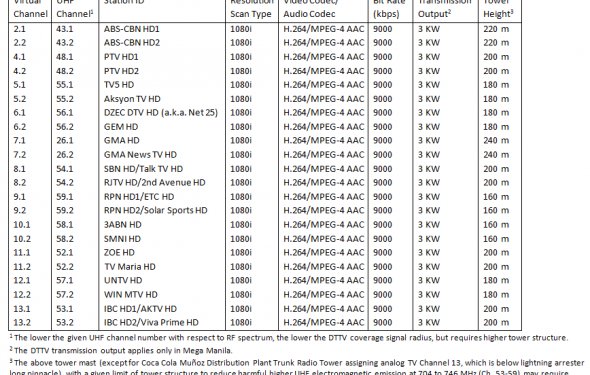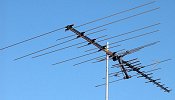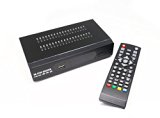UHF TV channels frequencies

 Presented by The National Association of Broadcasters, PBS,
Presented by The National Association of Broadcasters, PBS,
and Stallions Satellite and Antenna
Introduction
T he intent behind this Guide should supply information for enhancing UHF tv reception in the house. The installation methods below were proven with our buyer's installments in the last 10 years. If followed, you should have a superior quality installation which will deliver great TV reception for many years. If you encounter any difficulties with your TV antenna set up and need technical support, go ahead and call us and is happy to help you.
Ben Stallions,
Stallions Satellite and Antenna
Record and Future of UHF TV
Before tv initially began, the Federal Communications Commission allocated twelve stations for television broadcasting. These stations, 2 through 13, are in the "very high-frequency" or VHF musical organization. (Originally Channel 1 was also included, but ended up being quickly reassigned to many other functions.)
The great development in television broadcasting after World War II managed to make it apparent that 12 channels were not sufficient. So in 1952, the FCC allocated 70 additional stations over the VHF television musical organization and labeled as them "ultra high-frequency" and/or UHF band. They were stations 14 through 83. After that in the early 1980's, channels 70-83 were reassigned and became cellular phone frequencies.
In 2009, stations 52 through 69 will likely to be reassigned to uses besides television broadcasting, due to the quick development in transportable interaction solutions. The UHF musical organization will likely not lose 18 TV networks though. These television networks would be incorporated to the new hi-def television (H.D.T.V.) broadcasting standard, that may broadcast as much as six electronic networks in identical room as you analog channel. Utilizing high definition television, TV stations will be able to broadcast a photo quality this is certainly two times as razor-sharp given that analog broadcasts of the past. Digital broadcasting also enable adjacent station spacing of television stations without creating disturbance involving the two stations, making the broadcasting spectrum better. To see what television stations locally are currently broadcasting a digital signal, click on this link.
To see what television stations locally are currently broadcasting a digital signal, click on this link.
UHF Reception
UHF indicators, as a result of the physics of radio frequency transmission, tend to be naturally less efficient within the conversion of radio waves to the electrical signals used by the tv receiver, as they are susceptible to much more losings from some environmental circumstances than VHF indicators. Great UHF television reception therefore requires more attention to antenna set up and tuning (on older television's and VCR's) when compared with VHF television reception. Conversely, some VHF stations tend to be at the mercy of certain types of interference to which UHF networks are often protected.
Perfect reception for television signals can not be guaranteed simply because you will find a lot of factors included. However, by using the guidelines within guide, the probabilities for clear reception will undoubtedly be considerably enhanced.
Improving UHF reception can be a do-it-yourself task. Even when the job is given to an expert, the info within guide will give you an improved knowledge of what exactly is required and exactly what can be likely.
Poor Reception and Poor Antennas
We f UHF reception generally is bad, exactly how it's bad often helps figure out the difficulty. "Snow" is artistic sound caused by a weak sign, bad antenna system, the set it self, or a mix of these. "Ghosts" or several photos are brought on by a signal arriving from a couple of guidelines simultaneously reflected off structures, trees and hills. A good antenna system frequently solves these reception issues. A backyard antenna is preferable to an inside antenna, and an inside antenna is better than no antenna after all. If a backyard antenna is necessary permanently VHF reception, you will almost certainly need a patio antenna once and for all UHF reception. But if great VHF reception can be obtained with an inside antenna, a bowtie or any other UHF antenna on the TV might also work.
Indoor antennas:
All indoor antennas could be adversely affected by the wall space of a home, insufficient level, by activity of men and women when you look at the room-as can be observed with VHF "rabbit ears". Loop or single bow tie UHF antennas usually are maybe not satisfactory. They have been tough to adjust for maximum sign pick-up or even for reduction of spirits. Most indoor combination VHF/UHF antennas have actually a multi-position switch that may be adjusted to help get the best picture quality and some need an integral amplifier. Generally, these antennas aren't advantageous to UHF. Many transportable TV's have actually a VHF/UHF telescoping rod antenna, or "monopole", and usually UHF reception is bad with it, but could be improved whenever antenna is reduced to a length of 7 to 12 ins.
Ideal indoor antenna
If an inside UHF antenna must be used, the Zenith ZHDTV1Z (pictured) is the better choice. But, remember most outside antennas are always better than even most useful interior antennas. Ensure that the antenna wires are attached to the UHF terminals from the back of television and/or VCR.
Outdoor Antennas
T listed here are many different types of outside antennas for sale in a broad price range. The type chosen is set mainly by the geographic precise location of the receiving television.
4-bay bowtie UHF TV antenna (8-13dB gain) for residential district to fringe reception places with medium signal.Television signals tend to be best if the television section's broadcasting antenna and home getting antenna come in line-of-sight. If the line-of-sight is blocked or damaged by hills, buildings or trees, the signal, similarly is going to be damaged or lost. The sign may also get weaker since it travels farther from the broadcast antenna.
|
Momoday ATSC Digital TV Converter Box on Analog Television with Media Player & Recording Functions for US, Canada & Mexico - HDMI YPbPr RCA Coaxial Outputs for Easy Connecting Personal Computer (Momoday)
|
|
Infitary Digital ATSC HD TV Receiver Converter Tuner Box for Analog TV with Recording PVR Function HDMI YPbPr RCA Coaxial Composite Output / USB Input USA Home Theater (Infitary)
|
|

|
HD ATSC-T Digital TV Converter Box FOR MEXICO / USA /CANADA Market CE (ONE AUDIO)
|